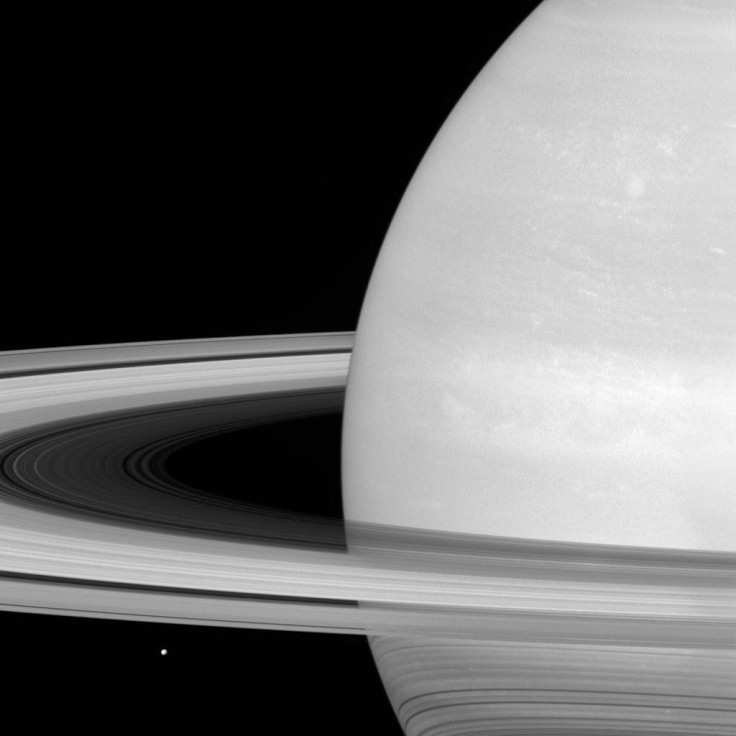Alien Crystals Found On Saturn's Moon 'Bathtub Rings,' Scientists Reveal

NASA scientists confirmed that they came across alien crystals while studying the lakes of Saturn’s moon Titan. They made the surprising discovery after recreating Titan’s environmental conditions inside a laboratory on Earth.
Previous scientific observations on Titan revealed that the moon’s lakes contain liquid hydrocarbons. The moon’s dry regions, on the other hand, show traces of evaporated material, similar to the rings that form on bathtubs.
While studying these bathtub rings near the moon’s lakes, scientists from NASA’s Jet Propulsion Laboratory and the Australian Nuclear Science and Technology Organization came across minerals that are not found on Earth.
According to a press release, the scientists made their findings after recreating Titan’s bathtub rings on Earth. They achieved this by using a device that maintains low cryogenic temperatures known as a cryostat. This device was then filled with liquid nitrogen.
They then warmed the device slightly in order to transform nitrogen into gas, which is similar to Titan’s atmosphere. The scientists then added other compounds commonly found on Titan such as methane, ethane and other molecules that contain carbon.
The mixture caused the formation of benzene crystals. Unlike the type of benzene commonly found on Earth as a component of gasoline, the benzene crystals that formed held a solid state. What’s even more surprising is that the crystal’s molecules rearranged themselves to accommodate ethane, which then created a co-crystal.
Other co-crystals composed of acetylene and butane began to form in the scientists’ experiment. According to the scientists, these crystals could be responsible for the formation of the rings on the moon’s lakes after liquid hydrocarbons evaporated.
They noted that the acetylene and butane co-crystals are very different in terms of composition compared to their Earth-counterparts.
“We call these ‘molecular minerals’ because they behave just like minerals do here on Earth, but instead of being made up of things like carbonates or silicates, they are made up of organic molecules,” the scientists wrote in the abstract of their study.
The findings of the scientists will be presented in the 2019 Astrobiology Science Conference, which will be held in Seattle, Washington from June 24 to 28.
© Copyright IBTimes 2025. All rights reserved.





















